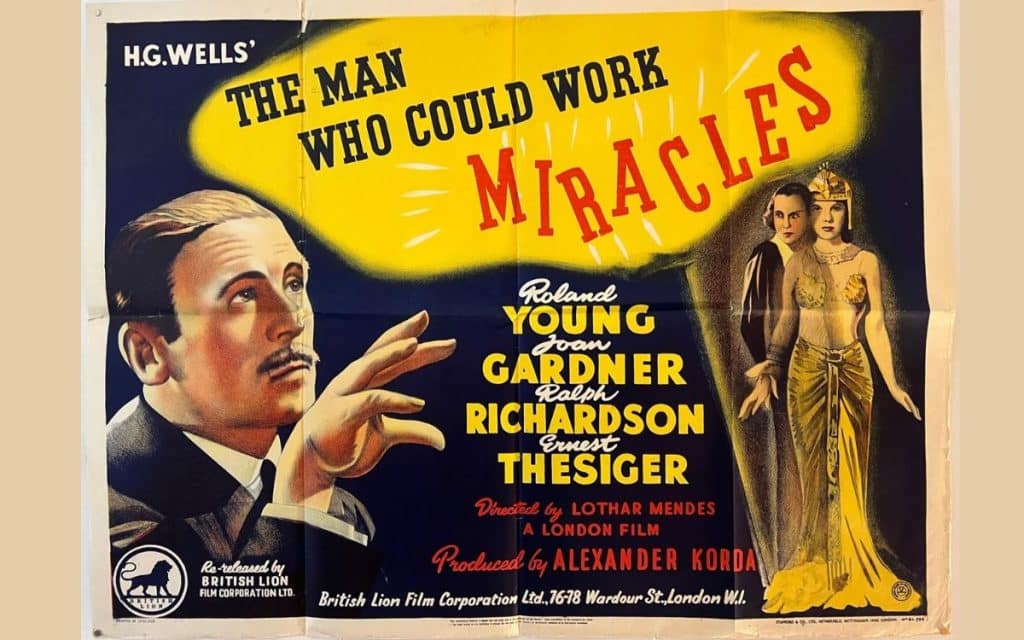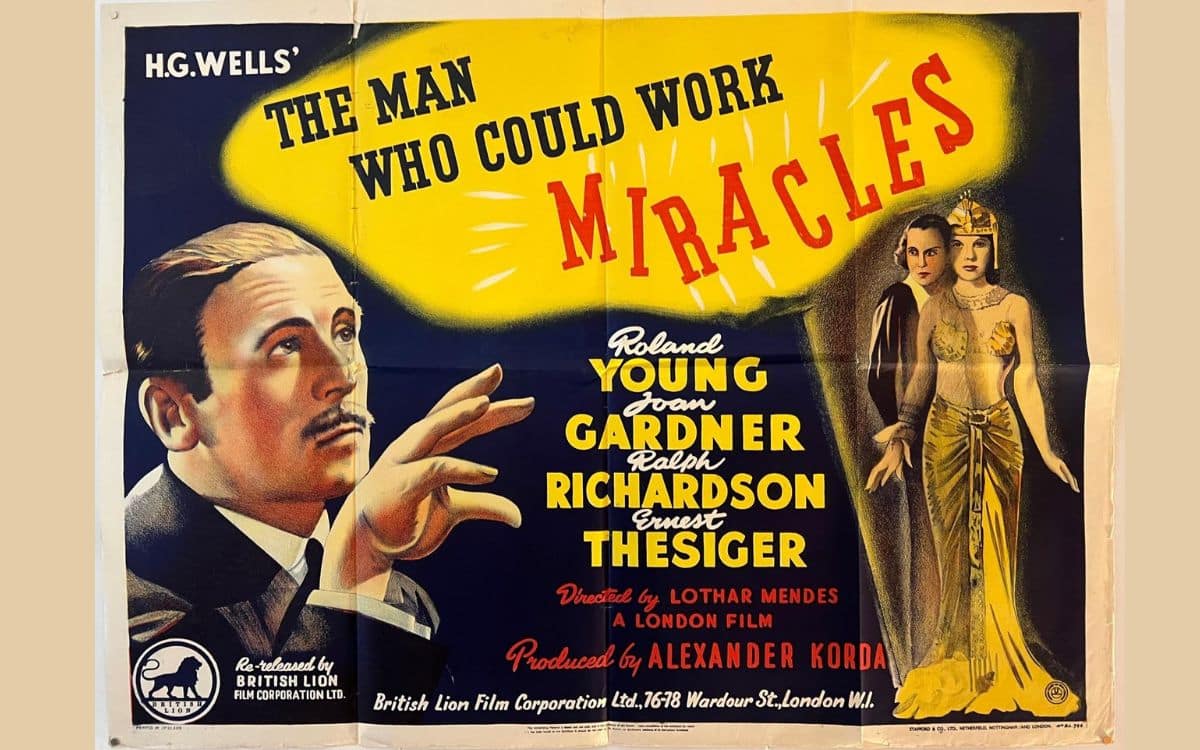H.G. Wells’ The Man Who Could Work Miracles 1937 is a whimsical British fantasy that blends satire, spectacle, and a cosmic cautionary tale, writes TERRY SHERWOOD
TITLE: The Man Who Could Work Miracles
RELEASED: 1 August 1937
DIRECTOR: Lothar Mendes
CAST: Roland Young, Ralph Richardson, Edward Chapman, Ernest Thesiger, Joan Hickson, George Zucco, Torin Thatcher, George Sanders
Review of The Man Who Could Work Miracles 1937
Holy hydrogen bombs, what do you get when you mix a celestial bet, a clerk, and a handful of hocus-pocus?
You get a forgotten gem from the Golden Age of British fantasy that zaps your brain with big ideas and tickles your funny bone with good old-fashioned whimsy.
Enter The Man Who Could Work Miracles (1937), with a script co-written by H.G. Wells.
Now, do not go looking for monsters in rubber suits or maniacal mad doctors. Perhaps there is a mild one or two. But make no mistake, this is pure fun: science-fiction wonder, power gone mad, and an ending that leaves you humming like a Tesla coil.
The story begins in the stars. A trio of shimmering Young Gods floats in the cosmic ether, watching the Earth like an experiment gone slightly off-script.
They are played by a youthful George Sanders, the velvet-voiced villain of All About Eve, the mystical Torin Thatcher, a fantasy film regular who would later battle Sinbad and sorcerers, and a young Joan Hickson, who would eventually become the sharp-eyed Miss Marple.

The guinea pig for their celestial wager is George McWhirter Fotheringay, portrayed by the rubber-faced and ever-bemused Roland Young.
Fotheringay is a mild-mannered haberdashery assistant whose life is as bland as cold tea—until, during a spat in the local pub, he casually commands a lamp to flip over. And it does.
From there, it is off to the magical races. He can grow trees in the middle of the street, send policemen to the United States, float furniture, summon servants, and later even attempt to eliminate war itself.
In his well-meaning bumbling, Fotheringay finds himself caught between greedy politicians, self-righteous reformers, and ordinary folks who simply cannot handle all that miracle-making.
Wellsian satire bubbles under every scene, with Fotheringay becoming a walking, talking warning label on the dangers of unchecked power.
The cast also features Ralph Richardson, who devours every scene he is in. George Zucco turns up in a comedic role as his butler, and the incomparable Ernest Thesiger, best remembered as Dr. Pretorius in Bride of Frankenstein, injects a touch of delicious madness.
Director Lothar Mendes juggles Wells’s philosophical musings with playful gags, and the special effects have the charming sparkle of early cinema magic.
Brooms sweep themselves. Houses vanish. Armies appear in palaces. It is all part of the fun.
In the end, the gods return to watch the fallout. Like a frustrated Frankenstein, poor Fotheringay begs to give it all back.
“Too much power for one man,” he declares, and with a cosmic wink, the film resets.
The Man Who Could Work Miracles remains a delightful detour into the Twilight Zone of British cinema. No monsters here – just mankind, mischief, and a miracle or two.
Tell us your thoughts about The Man Who Could Work Miracles 1937 in the comments section below!



